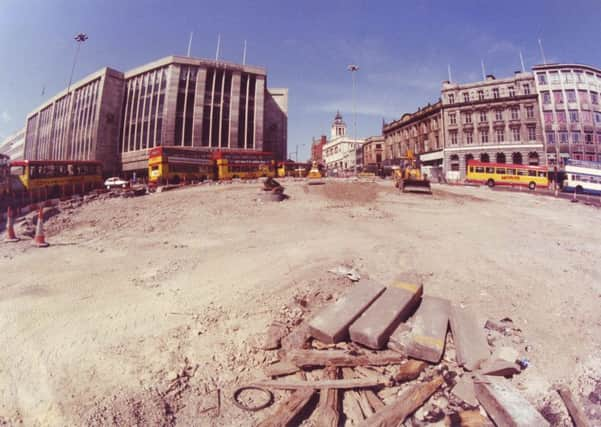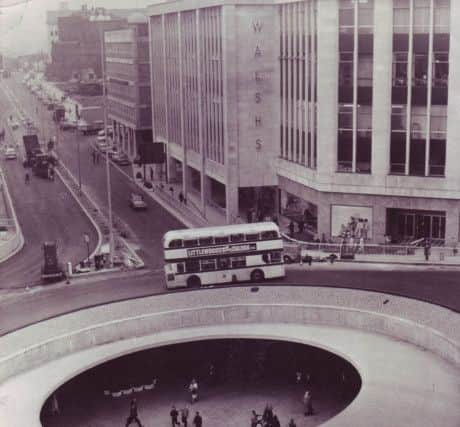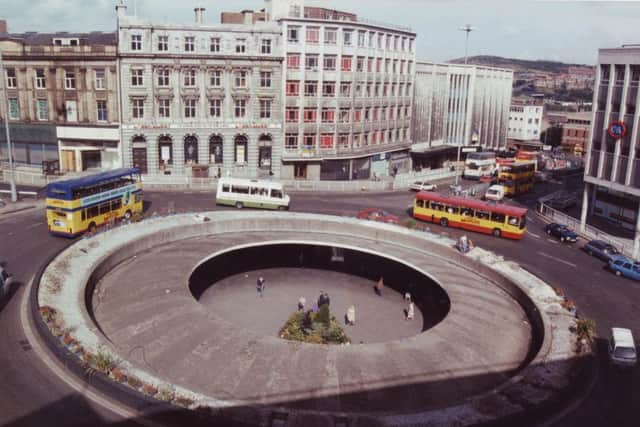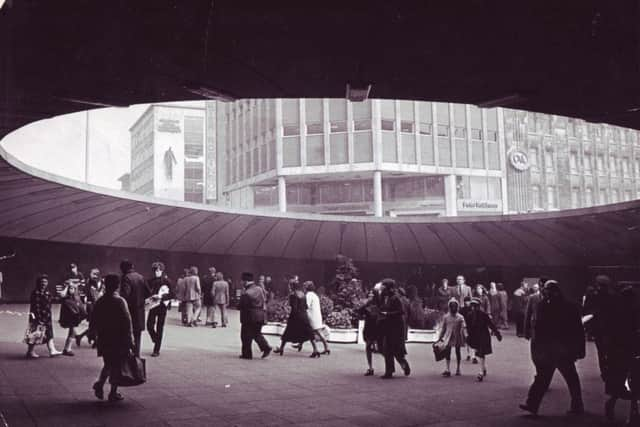RETRO: The day Sheffield's Hole In The Road was filled in


The underground network of pedestrian walkways built around Castle Square featured, as its centrepiece, the unmistakable Hole In The Road.
The structure came about thanks in part to the Germans. Or, rather, the heavy bombing in the area during World War Two led to the destruction of much of the city centre.


Advertisement
Hide AdAdvertisement
Hide AdIn 1967, many of the old streets were cleared to make way for the new Arundel Gate dual carriageway – and the Hole In The Road was born.
For years, the landmark – an open underground pedestrian walkway beneath a roundabout – was a striking, modern, even cool, design which set Sheffield apart from other city centres.
The underground tunnels were purported to be a thrilling step into the future; a portent of how all city centre shopping might one day be done. In fact, they were more than just pathways – many parts of the underground network contained subterranean shops and stalls, and even underground toilets, all accessible from street level by elevators. One unusual inclusion became legendary: a glass fish tank, built into the wall .
But it was not to last.


The underpass eventually became home to graffiti, vandalism and crime.
Advertisement
Hide AdAdvertisement
Hide AdThe paths became increasingly dilapidated and the Hole In The Road was less and less well used.
By the early 1990s, rumours had begun to surface that the hole may be filled in, and the structure degenerated further.
In some ways, it’s lucky, then, that the new South Yorkshire Supertram network came along when it did.


The new tramlines, which began to be built in 1993, would run right through the heart High Street – which meant that the once futuristic hole would have to go.
Advertisement
Hide AdAdvertisement
Hide AdA photo above, taken on June 15, 1995, shows the hole being filled in.
Rumours persist to this day that the hole was filled in with rubble from Hyde Park flats, a set of high rise ‘cities in the sky’ built out of concrete in the 1960s, which were partly demolished in 1991.
By 1995, the hole had been covered with tram lines and the exact spot it once stood now houses Castle Square tram stop.
Whatever you make of the Hole In The Road, it was one of the most iconic structures ever to grace Sheffield.
Now, Sheffielders fight potholes city-wide instead.
Not quite as charming...